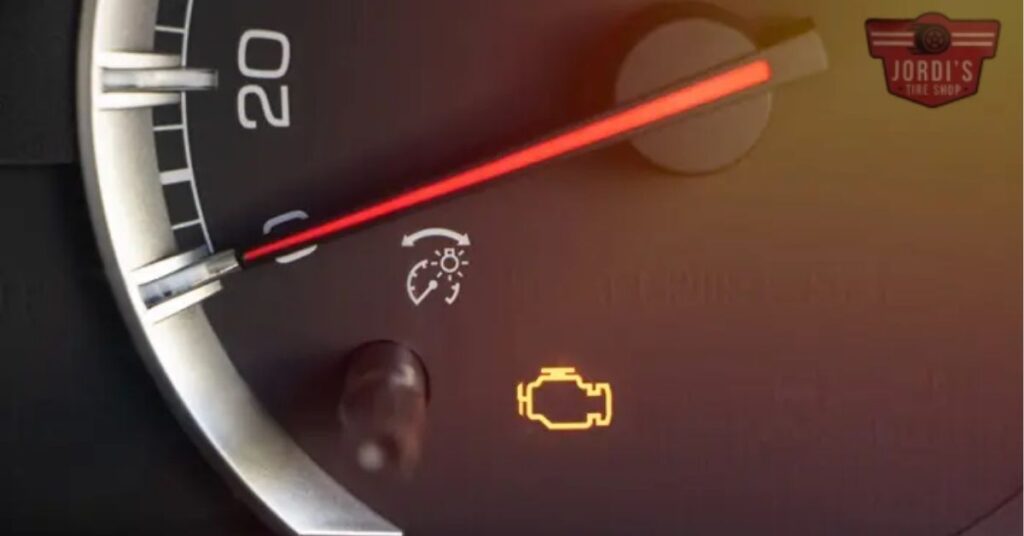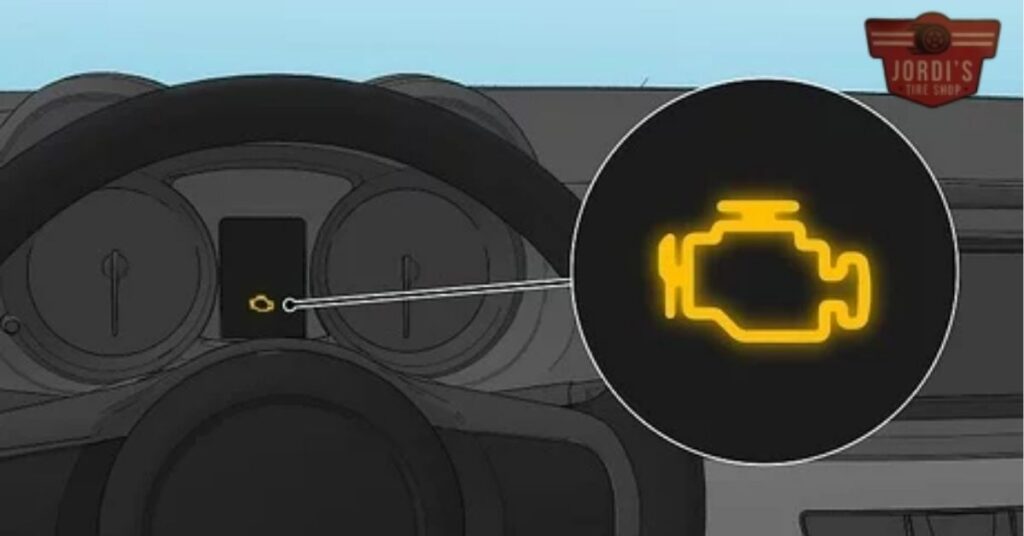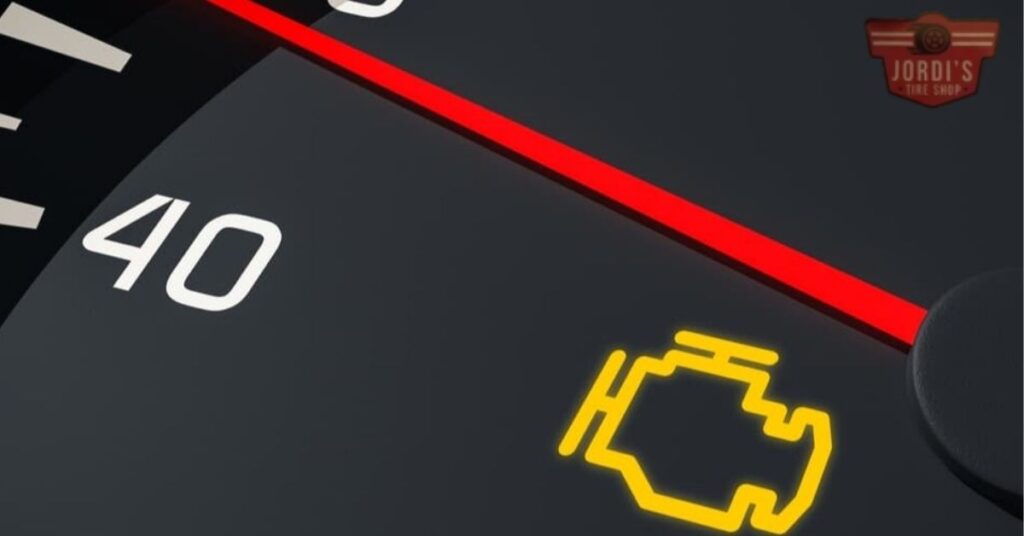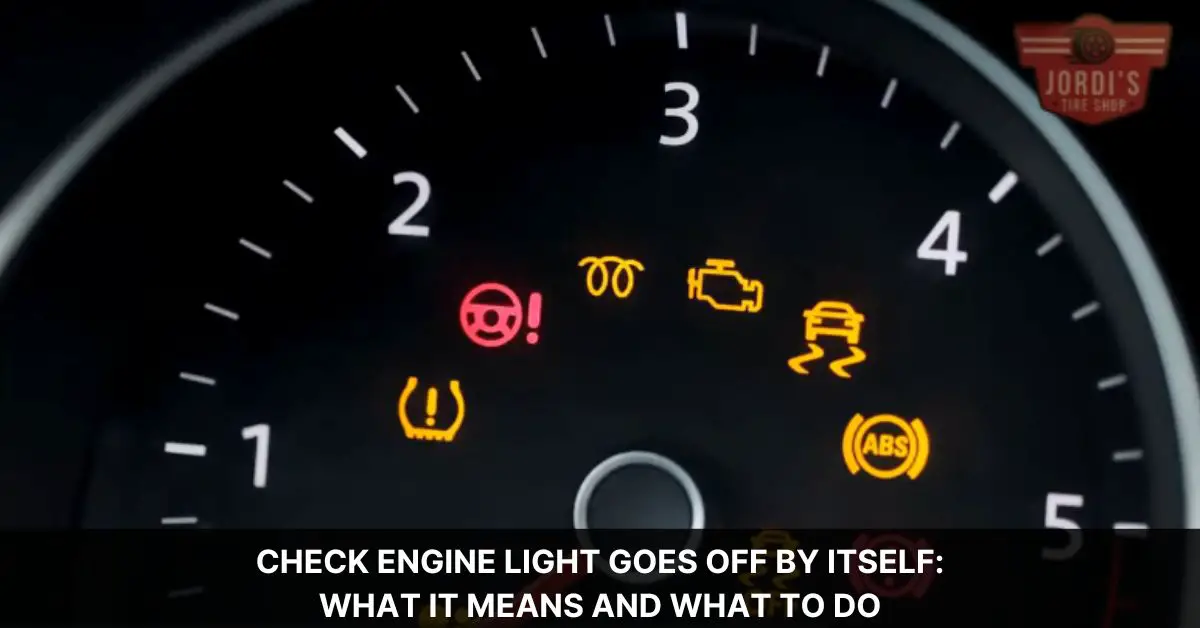We’ve all been there. You’re driving along, minding your own business, when suddenly the check engine light pops on. It’s enough to make your heart skip a beat. Questions start racing through your mind about what could possibly be wrong and how much it’s going to cost to fix. But then, just as mysteriously as it appeared, the light turns off all by itself. What gives?
It turns out there’s a whole host of reasons why this automotive enigma can happen. From simple fixes to more complex issues that might require a bit more attention, we’re here to shed some light on this perplexing situation. So buckle up and let’s dive into the world of check engine lights and the mystery of them turning off by themselves.
Understanding the Check Engine Light

Moving forward from the enigma of the check engine light’s spontaneous behavior, let’s delve into what exactly the check engine light signifies and why it might turn off without any apparent intervention. At its core, the check engine light, part of your vehicle’s onboard diagnostics system (OBD-II), serves as an early warning. Its illumination indicates that the car’s computer has detected an issue within the engine or its ancillary systems. This could range from minor faults, like a loose gas cap, to more severe concerns, such as a malfunctioning catalytic converter.
Interestingly, the light turning off by itself isn’t as mysterious as it might seem. The OBD-II system continuously monitors vehicle performance and various sensor readings. If it detects a problem, the check engine light comes on. However, if the condition that caused the light to turn on initially resolves or is no longer detected after several driving cycles, the system will turn the light off. A “driving cycle” involves starting the engine, driving, and shutting it down. The exact definition of a driving cycle can vary by manufacturer but typically involves a mix of city and highway driving.
Here are a few specific instances where the check engine light may go off by itself:
- Temporary Issues: Situations like changes in humidity or fuel quality can trigger the light. Once the condition normalizes, the light might turn off.
- Loose or Faulty Gas Cap: A common culprit for the check engine light coming on. If it’s tightened or replaced, the light may switch off after the system runs a self-check and finds no further issues.
- Small Emissions Leaks: These may sometimes seal on their own, especially with changes in temperature, thereby turning the light off.
However, it’s crucial not to ignore the check engine light, even if it turns off by itself. There could still be intermittent issues that need attention to prevent potential future breakdowns. Regular diagnostics checks can help identify and rectify problems, ensuring the vehicle’s longevity and efficiency.
Why the Check Engine Light May Go Off By Itself

Reflecting on the significance of the check engine light and its role as part of the vehicle’s onboard diagnostics system, it’s clear this indicator plays a critical part in maintaining vehicle health. However, scenarios exist where the check engine light may extinguish without any external intervention, leading us to investigate the reasons behind this phenomenon further.
Temporary Sensor Fluctuations or Malfunctions: Sometimes, sensors within the vehicle’s systems might temporarily malfunction or read outside their normal range due to various reasons, such as weather changes, rough roads, or even fluctuating engine temperatures. These conditions might trigger the check engine light. If the sensor readings stabilize in subsequent driving cycles, the system may turn the light off as the issue no longer exists.
Loose or Tightened Gas Cap: A common reason for the check engine light illuminating can be as simple as a loose gas cap, which causes fuel vapors to leak out, triggering emission control alerts. If the cap is tightened or reseated by the driver or naturally finds its proper sealing position, the light may turn off after a few driving cycles.
Minor Emissions Leaks: Small leaks in the vehicle’s emissions system can cause the check engine light to turn on. These leaks might self-seal due to changes in temperature or pressure conditions within the fuel system. As these leaks seal, the error codes related to emissions leaks might clear, turning off the check engine light.
Successful Regeneration of Components: Certain components, like the particulate filter in diesel engines, periodically go through a regeneration process to clear accumulated soot. A failure in this process might initially trigger the light. If the subsequent regeneration cycle completes successfully, the system may reset the light.
Understanding these reasons highlights the dynamic nature of the vehicle’s diagnostics system and the check engine light’s role as an indicator of both temporary and persistent issues. It underscores the importance of regular vehicle diagnostics and maintenance, as these self-resolving issues might only represent a portion of potential problems faced by drivers.
Diagnosing the Cause of a Check Engine Light Disappearance
When our check engine light turns off by itself, it’s crucial to determine the underlying cause to ensure our vehicle remains in optimal condition. Diagnosing the reason behind this phenomenon involves a few key steps and tools, primarily utilizing an OBD-II scanner, a device integral to understanding the codes generated by the vehicle’s onboard diagnostics system.
First, we connect the OBD-II scanner to the vehicle’s diagnostic port, usually located under the dashboard. This tool reads any stored or pending diagnostic trouble codes (DTCs) that can shed light on why the check engine light came on initially, even if it has since turned off. These codes pinpoint issues ranging from sensor malfunctions to problems in the emission system, providing a starting point for further investigation.
Next, we check for the most common problems, including a loose gas cap or temporary sensor fluctuations. A loose gas cap, a minor but frequent culprit, can trigger the check engine light due to fuel system pressure loss. Tightening or replacing the gas cap and driving for a few cycles often resolves this issue, turning the light off. Similarly, temporary sensor fluctuations due to weather changes or poor fuel quality can cause the check engine light to illuminate briefly before it turns off once the condition normalizes.
Inspecting for minor emissions leaks is another diagnostic step. Small leaks in the vehicle’s evaporative emissions system, which controls fuel vapors, may not always keep the check engine light on but should be addressed to prevent future emissions and performance issues.
Finally, acknowledging successful component regeneration, especially in diesel vehicles equipped with particulate filters, is essential. These systems occasionally initiate a self-cleaning process to clear out soot, which can temporarily activate the check engine light. Once the process completes, the light may turn off, indicating the issue has resolved.
Potential Problems Ignored by a Disappearing Check Engine Light

When a check engine light goes off by itself, it’s easy to breathe a sigh of relief and move on without a second thought. However, this disappearance can sometimes mask underlying problems that, if ignored, could lead to more significant issues down the road. Here, we’ll delve into potential problems that might be overlooked when a check engine light turns off spontaneously.
- Sensor Malfunctions: Sensors, especially the oxygen sensor, play a crucial role in vehicle diagnostics. A temporary malfunction could cause the check engine light to illuminate briefly and then turn off once the sensor resumes normal operation. However, intermittent sensor issues can escalate, affecting fuel efficiency and emissions.
- Loose Gas Cap: A common cause for a check engine light to turn on is a loose gas cap, leading to minor emissions leaks. Although tightening the gas cap might turn the light off, recurring issues might indicate a worn or damaged cap that needs replacement.
- Minor Emissions Leaks: Small leaks in the emissions system can trigger the light. Sometimes, these leaks seal themselves due to changes in temperature or pressure, turning the light off. Nonetheless, these leaks could reappear and worsen over time.
- Temporary Sensor Fluctuations: Vehicles’ sensors can experience fluctuations due to weather changes, rough roads, or sudden impacts. Such temporary disruptions might not indicate a serious issue, but consistent fluctuations need attention to avert potential future malfunctions.
- Successful Regeneration of Components: In some vehicles, especially those with diesel engines, components like the diesel particulate filter undergo regeneration phases that might temporarily light up the dashboard. While successful regeneration clears the light, repeated occurrences suggest the need for a diagnostic check to confirm system integrity.
Ignoring these signals from our vehicle can lead us into a false sense of security. It’s essential to use an OBD-II scanner to explore why the check engine light appeared in the first place, regardless of its current status. Addressing these overlooked issues promptly ensures our vehicle’s longevity and operational efficiency.
Preventative Measures and Maintenance Tips

Understanding the reasons behind the spontaneous off and on sequence of the check engine light pushes us to advocate for proactive vehicle care. Implementing preventative measures and adhering to maintenance tips not only ensures the longevity of your vehicle but also minimizes the chances of facing unexpected breakdowns. Here, we delve into specific actions you can take to avert the recurrence of such scenarios.
- Regular Vehicle Diagnostics: Make it a habit to conduct regular diagnostic checks using an OBD-II scanner. This practice can pinpoint potential issues early on, even before they trigger the check engine light. Many automotive shops offer this service, but owning a scanner provides the convenience of checking your vehicle’s health at any time.
- Timely Oil Changes: Oil is the lifeblood of your engine. Ensuring you change your oil at the manufacturer’s recommended intervals prevents many engine-related issues that could cause the check engine light to come on. Old or low oil can lead to increased engine friction, overheating, and eventually, significant engine damage.
- Check and Tighten Your Gas Cap: A loose or faulty gas cap is a simple yet frequent trigger for the check engine light. Regularly checking your gas cap for proper sealing and replacing it when it shows signs of wear can prevent air from entering the fuel system and triggering the light.
- Monitor Fluid Levels: Keep an eye on all vital fluid levels, including coolant, brake fluid, power steering fluid, and transmission fluid. Low levels can lead to system malfunctions, activating the check engine light.
- Adhere to Scheduled Maintenance: Your vehicle’s manual includes a maintenance schedule for a reason. Following it ensures that all parts of your vehicle are in optimal condition. Scheduled maintenance often includes checks and replacements that prevent common causes of the check engine light warning.
Incorporating these preventative measures and maintenance tips into your regular vehicle care routine, you reduce the risk of unexpected check engine light scenarios, maintain your vehicle’s health, and ensure a smoother, more reliable driving experience.
Conclusion
We’ve seen how a check engine light can be both a mystery and a warning. While it might turn off by itself, it’s a signal we shouldn’t ignore. Staying on top of our vehicle’s health through regular checks and maintenance is key. Let’s use this knowledge to keep our rides running smoothly and avoid those heart-stopping moments when the dashboard lights up. Remember, a little attention goes a long way in ensuring our vehicles stay in top shape for the journeys ahead. Happy driving!
Related Posts:
- Best Winter Tires for Honda Civic: Top Picks for Safe and Smooth Driving in Cold Weather
- Check Engine Light Goes Off By Itself: What It Means and What to Do
- Difference Between Tire and Wheel: A Simple Explanation
- Volt Propulsion Power Reduced: Causes and Solutions
- F150 Blend Door Actuator Reset: Quick and Easy Steps
- Supercharged Scat Pack: The Ultimate Muscle Car Upgrade
- Sys Off to Save Battery: Simple Tips to Extend Your Device’s Battery Life
- Suspension Tuning Car: Tips for Improving Your Ride Quality
- Gear Ratio by VIN: How to Find It for Your Vehicle
- Engine Wash: How to Keep Your Vehicle Running Smoothly

